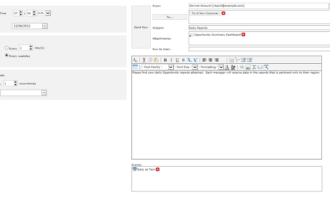As the use of SaaS and cloud services has grown, the API (Application Programming Interface) has come to the forefront as an important technology component in this web-enabled world. APIs are points of entry or connectivity methods, for integrations between different services, systems or applications. Extensive documentation is made available to assist developers, to quickly and effectively work with an API.
As the use of SaaS and cloud services has grown, the API (Application Programming Interface) has come to the forefront as an important technology component in this web-enabled world. APIs are points of entry or connectivity methods, for integrations between different services, systems or applications. Extensive documentation is made available to assist developers, to quickly and effectively work with an API.
Actually APIs have been around a long time, and have been used in data integration processes when other connectivity was unavailable. Both APIs and data integration have come a long way since then. Pre-built connectors for innumerable data sources and formats comprise ‘table stakes’ for today’s data integration requirements. As such, developers and users can quickly set up API connectivity to simplify the sharing of data between: cloud services and mobile apps, data integration processes and data repositories – and enterprise applications residing anywhere.
The Web API Economy
A detrimental side effect of the fast growth of SaaS applications and cloud services has been the propagation of endless data silos in the cloud. Vendors for cloud applications provide APIs to enable users to access that data, which unfortunately results in the propagation of endless proprietary APIs. Mobile apps have added another front for the non-stop creation of APIs. While many APIs are available to third party developers as “open” or public APIs, underneath they are frequently proprietary to each vendor and not necessarily “open source”.
Vendors for SaaS and cloud services have been able to find advantage in their APIs, both for their own purposes and to benefit their users, beyond accessing their data. APIs have become an economic factor that is opening the door to third-party innovation and developer communities. When vendors provide APIs, technology partners and other developers can create new applications (data mashups, for example) that extend the value of vendor services. Mobile apps in particular need such mashups to quickly and seamlessly pull in information that often comes from multiple sources.
Vendor companies are taking advantage of the APIs they have created to build their own digital sites, mobile apps and even internal business processes and applications. Slowly tools are appearing that enable business users (with good tech savvy) to work with APIs — following the lead of emerging self-service options for business users in data integration and analytics. So the API Economy is evolving to help different roles get a lot more from web-enabled applications and services.
Web API Management
Numerous software vendors have found opportunities in providing API Management platforms or solutions. At the high level, these solutions support:
- Development, publishing and documentation phases
- Creation of integrations through pre-built connectors
- Various deployment and customer usage activities
- Overall management and monitoring of API events and services
- API life cycle management
The primary customers have been companies that create web APIs, but third-party users and partners also interact through API management platforms. These platforms make APIs available to third parties, through a regulated and secure interface.
API Management for All APIs
For all the buzz about the API Economy and extending services, ultimately a lot of the value of APIs is in connecting to, aggregating and integrating data for more innovative business use. What’s exciting about the API Economy is that it’s making it easier to use APIs, even for less tech-savvy business users. When offerings begin to include access for business users, it means that the tools are more streamlined for in-house developers and third party solution providers – translating into faster time to implementation and more time for innovation.
Somewhat ironically, the developers and third-party users of web APIs are now folding in connectivity to data sources and applications in the “traditional” enterprise tech world as new ways to leverage APIs. The current notion of what’s called API Management will likely evolve beyond the initial focus on web APIs and APIs created and maintained by a particular company, to the broader enterprise world of systems.
Image source: cedefop






